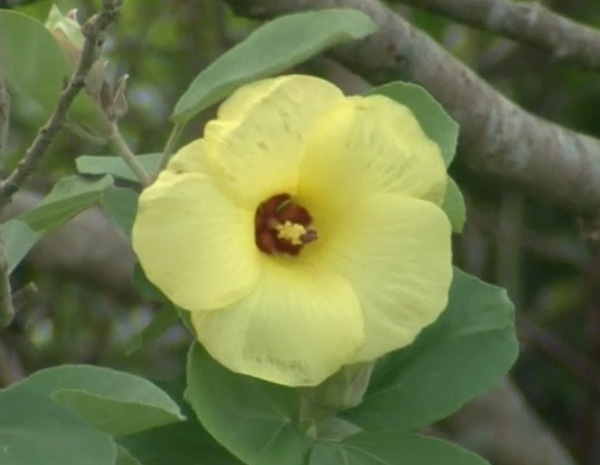- トップページ
- Fantastic Voyagers
- A tree doctor linking the hearts of trees and humans

A tree doctor linking the hearts of trees and humans
Did you know that there is such a profession as a doctor of trees?
As mankind is getting further and further away from nature, perhaps now is a time to stop and listen to the voice of the trees.

Konami Tsukamoto
Environmental and tree planting consultant, and Japan’s first female tree doctor. Her 1996 transplantation of a giant wisteria in Ashikaga Flower Park was a big success, and in 1999 she became the director of the park. She is currently active in protecting, curing and transplanting giant trees and old woods all over the country.
Trees are all-acceptive beings
“Trees accept everything. That is how I’ve come to think by doing this job,” says tree doctor Konami Tsukamoto. A tree doctor is a specialist with a license to “diagnose and treat trees, nurture saplings, and spread information and give guidance on tree protection.” Ms. Tsukamoto is known as the first woman in Japan to become a tree doctor and is busy traveling all over the country to protect and care for giant trees and old trees.
“No matter if you cut off their branches, or they are struck by lightning, or if they rot due to lack of care, they will accept it and forgive. That’s the way trees are,” says Ms. Tsukamoto. “Animals can move around, but a tree has to stay alive where it stands. Feeling sorry for trees or wanting to take care of them is something that only humans do.”
However, when treating trees that are several hundred years old, Tsukamoto too admits to sometimes wondering, “Am I, who am only a couple of decades old, really qualified to do this?” One thing is for sure, what the trees themselves really think, we will never know.
“Still, there are people who have profound emotions for trees and want to preserve them for generations to come. I have come to believe that the role of a tree doctor is to help those people.”
|
|
|
|
Roots are important for both trees and humans
“The most important thing for a tree is the soil where it grows. The soil environment depends on the air and the water and the earth, and if they are not good, it will have a bad influence on the roots growing underground.”
It is thanks to a vast network of roots firmly in the ground that the trunk and branches above ground are able to soar. If the earth around the roots is dry and hard, the roots won’t be able to grow properly. You can’t see the real tree just by looking at the part above ground. The roots of a tree spread in a range 20 to 30 times wider than the diameter of the trunk. All of those form part of the tree as a “living being.”
“That roots are important is true for people as well,” says Ms. Tsukamoto. In the case of humans, the roots may correspond to things like where and how you grew up. Recently, the news are filled with reports of formerly unthinkable incidents and accidents, and for many of us that is a sign that the roots of modern people have become twisted.
“People today have become too far removed from nature. Even mountains that appear lushly green from afar are actually getting ruined due to lack of care, but people don’t even notice that fact.”
The Japanese have a long history since ancient times of revering nature, as a place where the presence of the gods was felt. But after WWII, all attention was turned to developing the economy, and as a result we may have lost our power to listen to the trees and other plants.
“Many people are shouting for protection of the global environment, but to me, that is a very arrogant attitude. It is us humans who are blessed by nature and should be protected by it… Try once standing barefoot on the ground. I’m sure you will feel something.”
Tree medicine is a kind of natural medicine
Currently, Ms. Tsukamoto is the director of the Ashikaga Flower Park, 150 km north of Tokyo, which is a kind of theme park where you can enjoy the plants and flowers of each season. In particular its over 1000 m2 large, 130-year-old Giant Wisteria trellis is famous all over the world, and draws huge crowds of tourists in its peak season from late April through May.
“The more people are familiar with ordinary wisteria trellises, the more surprised they are when they see this giant wisteria. All the ones they had previously seen seem to fade a bit in comparison.”
Actually, this giant wisteria was originally growing in another place and was transplanted to its current location under the guidance of Ms. Tsukamoto. This success led to her appointment as director of the park in 1999, a position that allows her to keep watch over the transplanted wisteria.
Walking around in the flower park, you may notice that some tree trunks and branches are painted black in places. This is part of Ms. Tsukamoto’s unique tree therapy.
“I paint the damaged parts with ink. For myself, I prefer not to use chemical drugs. So when I treat a tree, I think: if this was my own body, what would I like to have done to me? Even if I’m a tree doctor, my real work is to help the tree’s own recuperative powers along.”
In other words, a tree doctor is not a scalpel-wielding surgeon, but more like a doctor of herbal medicine, who considers the balance of the whole body. Every year when spring comes around, the blossoming trees remind us of the cycle of life. The next time you go out in your garden or visit a park in your neighborhood, how about stopping for a moment to look at the trees and thinking “How is the tree feeling about living in a place like this?” Perhaps it will be the beginning of a new relationship to trees.

Ashikaga Flower Park, where you can see the Giant Wisteria, as well as many other flowers and plants. For details, see the park’s official homepage:
![]() https://www.ashikaga.co.jp/english/index.html
https://www.ashikaga.co.jp/english/index.html




